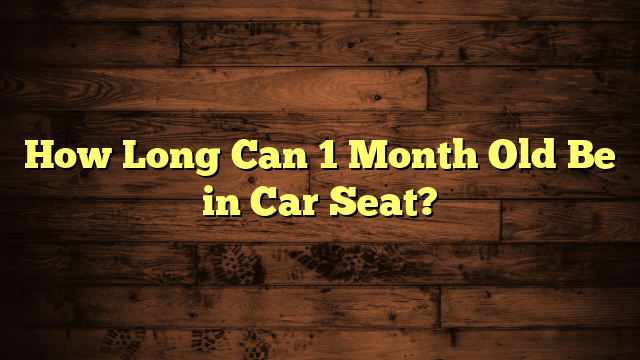Can a Seatbelt Cut You in Half?
You might have heard the alarming claim that a seatbelt can cut you in half during an accident, but is there any truth to it? While it's easy to be swayed by sensational stories, understanding the mechanics behind seatbelt design and function is essential. Seatbelts are intended to protect you, not harm you, yet improper use can lead to serious injuries. So, what really happens in a crash, and how do human anatomy and seatbelt positioning play a role? The answers might surprise you.
Key Takeaways
- Seatbelts are designed to distribute forces across the body, reducing the risk of severe injury, rather than causing extreme harm.
- While improper use or positioning can lead to injuries, such as bruising, seatbelts do not have the capacity to cut a person in half.
- In the event of a collision, inertia causes the body to move forward, making seatbelts essential for preventing serious injury, not for causing it.
- The risk of severe injury from not wearing a seatbelt far outweighs potential harm from the seatbelt itself.
- Properly worn seatbelts, including lap and shoulder belts, significantly decrease the risk of fatalities in car accidents.
Understanding Seatbelt Mechanics
Seatbelts are designed with a few key mechanics that guarantee your safety during a crash. Understanding seatbelt design is fundamental for appreciating how these restraint systems work. When you buckle up, the seatbelt engages a series of components that effectively secure you in place.
The webbing material is engineered to withstand significant forces, stretching just enough to absorb impact energy without causing injury.
The seatbelt's retractor mechanism plays an important role too. It locks the belt in place during sudden stops or collisions, preventing you from being thrown forward. This locking feature is essential, as it helps distribute crash forces across your stronger body parts, like your chest and pelvis.
Moreover, modern seatbelt systems often include pretensioners, which tighten the belt upon impact to reduce slack. This additional feature enhances your protection by minimizing movement during a crash.
The Physics of Car Accidents
Understanding how seatbelts work lays the foundation for grasping the physics involved in car accidents. When a vehicle suddenly decelerates due to a collision, your body continues moving forward due to inertia. This is where the acceleration effects come into play. The rapid change in speed during a crash creates forces that can be devastating.
Collision dynamics refer to the interactions that occur when two vehicles collide. The energy from the impact doesn't just disappear; it transfers through the vehicles and, unfortunately, to the passengers. Your seatbelt is designed to manage this energy transfer, helping to keep you restrained and reducing the risk of severe injury.
However, if the force is extreme, the belt can create harmful pressure against your body.
In essence, the physics of car accidents hinges on understanding how forces act upon you during a crash. You might feel like you're being pulled in multiple directions, but your seatbelt works to absorb some of that force.
Knowing these principles can help you appreciate the importance of wearing a seatbelt and how it plays a vital role in keeping you safe during unexpected events on the road.
Human Anatomy and Seatbelt Use
When you buckle up, you're relying on a seatbelt to protect you during a crash, but it can also cause injury depending on the forces at play.
Understanding the anatomy of potential seatbelt injuries and how impact forces affect your body is vital for recognizing the risks involved.
In this discussion, you'll learn about the delicate balance between safety and injury that seatbelts represent.
Anatomy of Seatbelt Injury
In the chaos of a car crash, the human body faces immense forces, and the seatbelt's role becomes crucial in preventing severe injuries. Seatbelt design has evolved markedly to maximize safety and minimize harm. When properly worn, seatbelts distribute impact forces across sturdier parts of your body, like your pelvis and ribcage, rather than your softer tissues.
However, improper use or failure of the seatbelt can lead to injury. If the seatbelt is too loose, it may not secure you effectively, allowing your body to move dangerously during a collision. On the other hand, if it's too tight or positioned incorrectly, it can cause bruising or even internal injuries, particularly in sensitive areas like the abdomen.
Injury prevention relies on understanding how a seatbelt functions. The lap belt should rest low across your hips, while the shoulder belt should cross your chest. This positioning helps protect crucial organs while keeping you in your seat.
Also, verify your seatbelt is in good condition, as wear and tear can compromise its effectiveness during an accident. Remember, securing your seatbelt properly can make a critical difference in a crash.
Impact Forces on Body
The immense forces generated during a car crash can be terrifying, but knowing how they interact with your body can empower you to stay safe. When a vehicle suddenly stops, the impact force can be several times your body weight. Your body doesn't just come to a halt; it continues moving forward until something—like your seatbelt—catches it.
This sudden stop can lead to considerable body response, including whiplash or even internal injuries.
Seatbelts are designed to distribute this impact force across your body, primarily over your chest and pelvis, reducing the risk of severe injuries. However, if the seatbelt isn't properly positioned, it could create concentrated pressure on specific areas, potentially leading to lacerations or bruising.
Understanding how impact forces work can help you adjust your seatbelt correctly, ensuring it fits snugly across your lap and shoulder.
Stay aware that the combination of speed and inertia can turn a minor accident into a major injury. By respecting the power of impact forces and using your seatbelt correctly, you greatly increase your chances of surviving a crash with minimal injury.
Common Misconceptions About Seatbelts
You might think that seatbelts can cause serious injuries or even cut you in half, but that's far from the truth.
Many common myths surround seatbelt use, leading people to underestimate their safety benefits.
Let's clear up these misconceptions and explore the real risks and rewards of buckling up.
Seatbelt Myths Debunked
Over the years, numerous myths about seatbelts have circulated, leading to confusion and misconceptions about their safety. One common myth is that seatbelts can cause more harm than good. However, seatbelt history shows that they greatly reduce the risk of injury and death during crashes.
Thanks to rigorous crash testing, it's clear that wearing a seatbelt is one of the most effective ways to protect yourself in a vehicle.
Another misconception is that seatbelts are only necessary for front-seat passengers. In reality, all passengers, regardless of their seat location, benefit from wearing seatbelts.
Statistics have proven that unbelted rear-seat passengers can become projectiles, endangering not only themselves but also those in the front seats.
Some people also believe that they can brace themselves during a crash instead of using a seatbelt. This is a dangerous myth; the force of a collision is far too great for anyone to withstand without being secured.
So, the next time you buckle up, remember that you're not just following the rules—you're actively protecting yourself and your passengers.
There's no doubt: seatbelts save lives.
Safety vs. Injury Risks
Many people still hold onto misconceptions about seatbelts, particularly when it comes to balancing safety and injury risks.
It's important to understand the facts behind seatbelt effectiveness and injury prevention. Here are four common misconceptions you might encounter:
- Seatbelts are only for minor accidents: In reality, they considerably reduce the risk of severe injuries in serious crashes, making them essential in all scenarios.
- You're safer without a seatbelt: Some believe they can brace themselves better without a seatbelt. However, unrestrained passengers are far more likely to suffer critical injuries or fatalities in collisions.
- Airbags make seatbelts unnecessary: While airbags provide additional protection, they work best in conjunction with seatbelts. Relying solely on airbags can lead to severe outcomes.
- Seatbelts can cause harm: Though a seatbelt can cause some bruising, the risk of severe injury or death without one far outweighs these minor discomforts.
Understanding these points helps you appreciate the important role seatbelts play in your safety.
Factors That Influence Injuries
When it comes to seatbelt-related injuries, several key factors play a significant role in determining the outcome of an accident. Your body's position and the dynamics of how you occupy the space in the vehicle—known as occupant dynamics—are vital.
If you're leaning forward or positioned awkwardly, the seatbelt may not distribute force evenly, increasing injury severity.
The type of collision also matters. A high-speed impact can lead to more severe injuries regardless of seatbelt use, while lower-speed accidents might result in less harm.
Furthermore, the age and size of the occupant can influence how effectively a seatbelt protects you. Smaller individuals, like children, can experience different injury patterns due to their size and the way seatbelts fit them.
Lastly, the design of the vehicle itself, including the type of seat and the presence of airbags, can either mitigate or exacerbate injuries.
Understanding these factors can help you appreciate the importance of proper seatbelt use and vehicle safety features. Always remember, a well-fitted seatbelt is essential for reducing injury severity during an accident.
Proper Seatbelt Positioning
Proper seatbelt positioning is essential for maximizing safety during a car accident. When you buckle up, you want to guarantee that the seatbelt is adjusted correctly for a comfortable fit. This helps distribute force evenly in the event of a collision, reducing the risk of injury.
Here are four key tips for proper seatbelt positioning:
- Shoulder Belt: The shoulder belt should cross your chest and rest snugly against your shoulder, not your neck.
- Lap Belt: Position the lap belt low on your hips, below your pelvic bones, to prevent it from riding up over your abdomen.
- Adjustment: Adjust the seatbelt's height if possible, guaranteeing that it fits properly across your body without excessive slack.
- Check for Twists: Make sure the seatbelt is free of twists and kinks, as these can affect its effectiveness during a crash.
Safety Recommendations and Best Practices
Ensuring your seatbelt is positioned correctly is just the first step in maximizing your safety on the road. To enhance seatbelt effectiveness, always wear it snugly across your lap and shoulder. This simple action can greatly reduce your chances of injury during a collision.
Remember, the seatbelt's role in accident prevention can't be overstated; it's your first line of defense.
In addition to wearing your seatbelt properly, make sure your passengers do the same. Encourage everyone in the vehicle to buckle up, regardless of their seating position. Each person's safety matters, and it creates a culture of responsibility.
Regularly check your seatbelt for any signs of wear or damage. A frayed or malfunctioning belt can compromise its effectiveness during an accident. If you notice any issues, replace it immediately.
Lastly, stay updated on the latest safety recommendations and technology, such as advanced seatbelt systems that can provide additional protection.
Frequently Asked Questions
Can Seatbelts Cause Internal Injuries During an Accident?
Yes, seatbelts can cause internal injuries during an accident. If you're not wearing it properly, the force can lead to internal damage, resulting in serious seatbelt injuries. Always make certain your seatbelt fits snugly to minimize risks.
Are There Different Types of Seatbelts?
Yes, there are different types of seatbelts. You'll find lap belts, which secure your hips, and shoulder belts, which cross over your chest. Each type plays an essential role in ensuring your safety during a ride.
How Do Seatbelt Laws Vary by State?
Seatbelt laws vary by state, with different seatbelt enforcement levels and state regulations. Some states require all passengers to buckle up, while others focus mainly on front-seat occupants. Always check your state's specific requirements.
What Are the Statistics on Seatbelt Effectiveness?
Imagine a superhero's cape; it keeps you safe while flying. Similarly, seatbelt design greatly boosts your safety ratings. Statistics show that seatbelts reduce fatal injuries by about 45%, proving their life-saving effectiveness in crashes.
Do Airbags Work With Seatbelts for Better Safety?
Yes, airbags work with seatbelts to enhance safety. When you buckle up, the airbag's functionality kicks in during a crash, providing essential protection, reducing injuries, and greatly improving overall safety during vehicle accidents.
Conclusion
In summary, while it might seem alarming to think about seatbelts causing severe injuries, the reality is quite different. Properly worn seatbelts are essential for safety, greatly reducing the risk of fatality in accidents. Remember, the idea that they can cut you in half is a myth; instead, they work to protect you by distributing crash forces. Always buckle up correctly, and you'll enhance your chances of staying safe on the road. Your life depends on it!
- Can I Get in a Taxi Without a Car Seat? - January 26, 2025
- Can I Get Chlamydia From a Toilet Seat? - January 26, 2025
- Can I Get an Uber With a Car Seat? - January 26, 2025






